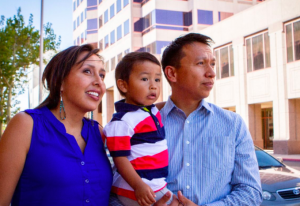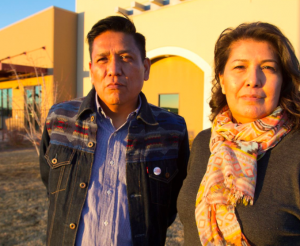Oct
23

Posted by Ann Madhavan on October 23rd, 2017
Posted in: Health Literacy
Tags: Medical Librarians Month
I would like to acknowledge the Urban Indian Health Institute’s enormous contribution to today’s blog! — Annie
 In past blog posts, we have explored health literacy issues from a variety of perspectives. Today we explore how it impacts American Indians and Alaska Natives (AI/ANs). According to the Indian Health Service, “low health literacy is disproportionately burdensome to American Indians and Alaska Natives and their elders.”2 Individuals with lower health literacy skills often use more health care services designed to treat disease complications, while fewer use services intended to prevent complications. Because health literacy is closely linked to poverty, AI/ANs are disproportionately impacted. According to the 2016 American Community Survey, the median household income was $39,719 for AI/AN households and $63,155 for Non-Hispanic White households, and 21.74% of AI/AN households lived below the Federal Poverty Line, compared to 6.36% for Hispanic White households (view graphs).
In past blog posts, we have explored health literacy issues from a variety of perspectives. Today we explore how it impacts American Indians and Alaska Natives (AI/ANs). According to the Indian Health Service, “low health literacy is disproportionately burdensome to American Indians and Alaska Natives and their elders.”2 Individuals with lower health literacy skills often use more health care services designed to treat disease complications, while fewer use services intended to prevent complications. Because health literacy is closely linked to poverty, AI/ANs are disproportionately impacted. According to the 2016 American Community Survey, the median household income was $39,719 for AI/AN households and $63,155 for Non-Hispanic White households, and 21.74% of AI/AN households lived below the Federal Poverty Line, compared to 6.36% for Hispanic White households (view graphs).
American Indians and Alaska Natives have historically experienced significant health disparities compared to other Americans, leading to lower life expectancy and greater disease burden. The leading causes of death for AI/ANs include diseases of the heart, malignant neoplasm, unintentional injuries, and diabetes. Governmental policies, institutional practices, and systemic oppression of cultural teachings have shaped the current conditions by which AI/ANs experience racially disparate outcomes in educational attainment, economic outcomes, and access to health care services, including culturally relevant health literacy. All of which contribute to higher rates of chronic diseases among AI/ANs.
The Centers for Disease Control and Prevention (CDC) is one government agency supporting culturally adapted health literacy models led by and for AI/ANs. Between 2014-2019, the CDC will invest $78 million in chronic disease prevention efforts through the Good Health and Wellness in Indian Country (GHWIC) initiative. Increasing health literacy as one of five GHWIC goals. The GHWIC initiative is unique because it promotes revitalization of indigenous values and traditional knowledge.
 Annually, over 100 tribes and tribal organizations craft community driven health promotion strategies based on local norms and cultural values. These culturally adapted and community responsive strategies aim to combat the higher rates of chronic disease experienced by AI/ANs. Since 2014, GHWIC-funded communities have adapted health promotion materials, trained medical providers in culturally competent care practices, and promoted community-based prevention models.
Annually, over 100 tribes and tribal organizations craft community driven health promotion strategies based on local norms and cultural values. These culturally adapted and community responsive strategies aim to combat the higher rates of chronic disease experienced by AI/ANs. Since 2014, GHWIC-funded communities have adapted health promotion materials, trained medical providers in culturally competent care practices, and promoted community-based prevention models.
For example, GHWIC-funded communities have used cultural adaptations of tobacco prevention and management models to reduce commercial tobacco use and exposure to secondhand smoke. Commercial tobacco is the single most preventable cause of disease, disability, and death for AI/ANs. With the support of GHWIC, tribes and tribal organizations craft health promotion materials, coordinate media campaigns, and implement smoke-free policies to address and reverse the impact of commercial tobacco use while distinguishing and reclaiming the role of traditional tobacco. Through this multi-pronged and collaborative approach, GHWIC-funded communities ensure that health literacy is culturally appropriate and relevant to their communities.
Learn more about culturally relevant health literacy efforts by visiting the GHWIC Interactive Storymap.
 The Indian Health Service (IHS) provides another example of a government agency working to eliminate health disparities in AI/AN communities. The IHS mission is to “raise the physical, mental, social, and spiritual health of American Indians and Alaska Natives to the highest level,” and health literacy is one component of improving health quality and health communication. The IHS website offers guidance to health care providers on how to improve health literacy by adapting health literacy tools for providing culturally sensitive care.
The Indian Health Service (IHS) provides another example of a government agency working to eliminate health disparities in AI/AN communities. The IHS mission is to “raise the physical, mental, social, and spiritual health of American Indians and Alaska Natives to the highest level,” and health literacy is one component of improving health quality and health communication. The IHS website offers guidance to health care providers on how to improve health literacy by adapting health literacy tools for providing culturally sensitive care.
Check out the IHS “October is National Health Literacy Month” announcement for more information on the how they are addressing this issue, and check out Alberta Becenti’s (Navajo) blog, “Health Literacy Month Brings Attention to Importance of Delivering Clear Information to Patients” on how to “Be a Health Literacy Hero.”